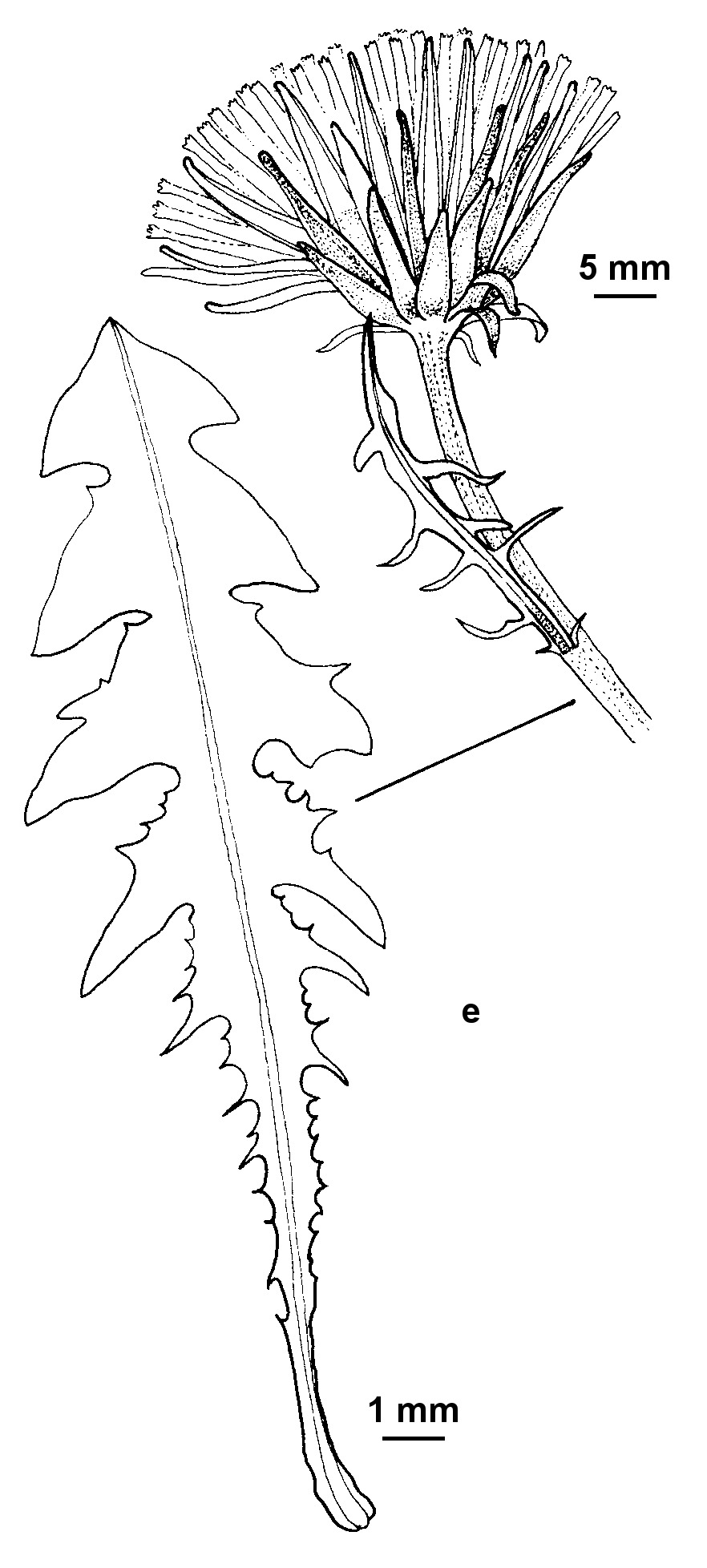Taraxacum bracteatum
Dahlst. DandelionLeaves lanceolate to oblanceolate, 10–25 cm long, 3–5 cm wide, glabrescent; lateral lobes in 3–5 pairs, broadly deltoid to hooked, distal margins of upper 2 or 3 lobes entire, proximal margins entire, usually convex; petiole brown-purple with interwoven green strands, very narrowly winged at base, with wings broader distally. Scapes 5–20 cm long at anthesis, 15–35 cm long in fruit, usually with 1 or 2 foliose bracts. Capitula c. 4.5 cm diam.; outermost bracts narrowly lanceolate, 5–7 mm long, 1–2 mm wide, usually laciniate, erecto-patent, narrowly white-bordered (c. 0.1 mm), not callus-tipped; innermost bracts linear c. 15 mm long, 2–3 mm wide, not callus-tipped. Outer ligules flat, exceeding involucre by 8 mm; anthers with pollen; stigmas dull-green. Cypselas broadly fusiform, 3.5–4.5 mm long, c. 1 mm wide, olive-brown to straw-coloured, shortly spinulose at apex, verruculose to smooth in lower two thirds; cone conical to ± cylindrical, c. 0.8–1 mm long; beak 6–9 mm long; pappus 5–6 mm long. Flowers Sept.–Apr.
GipP, Gold, CVU, EGL, HSF, MonT. Also naturalised Tas. Native to northern and central Europe. Native to Europe. Grows in damp places in gardens, camping grounds and on roadsides. It is also abundant in disturbed alpine grassland; often on heavy basaltic or alluvial soil.
Taraxacum bracteatum is regarded as an anomylous species in section Hamata by Øllgaard (1983) based on its cytology, while Dudman & Richards (1997) include it in section Celtica. It is one of a number of species which fits uneasily in either section.
Scarlett, N.H. (1999). Taraxacum. In: Walsh, N.G.; Entwisle, T.J., Flora of Victoria Vol. 4, Cornaceae to Asteraceae, pp. 688–694. Inkata Press, Melbourne.
 Spinning
SpinningDudman, A.A.; Richards, A.J. (1997). Dandelions of Great Britain and Ireland. Botanical Society of the British Isles, Handbook no 9.
Øllgaard, H. (1983). Hamata, a new section of Taraxacum (Asteraceae). Plant Systematics and Evolution. 141: 199–217.

